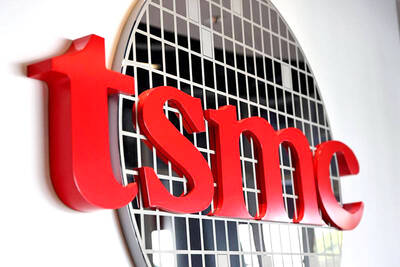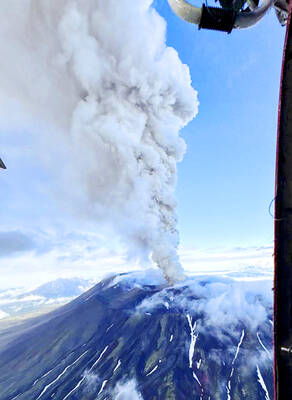After years of losses, Sun Microsystems returned to profitability in the last quarter, while Advanced Micro Devices (AMD) swung to a loss, providing evidence that the road to recovery in the technology industry is a bumpy one.
"It's great to be profitable again," Jonathan Schwartz, chief executive of Sun, whose string of losses had once led analysts to question the company's ability to survive, told analysts in a conference call. "Sun's financial performance this quarter demonstrates that our strategy and discipline are paying off."
In contrast, Advanced Micro Devices, the computer chip maker, reported a US$574 million loss, in contrast to a US$96 million profit in the quarter a year earlier. Ten days ago, it warned investors that lower prices had hurt its bottom line, a result of a bruising price war with its larger rival, Intel.
On Monday, Intel announced a deal to become a second outside supplier of server chips to Sun, entering territory that AMD had long claimed for itself. Sun also announced on Tuesday that the private equity firm Kohlberg Kravis Roberts & Co would make a US$700 million investment in the company in the form of convertible senior notes.
Sun's net income for the quarter, the second of its fiscal year, was US$126 million, or US$0.03 a share, in contrast to a net loss of US$223 million, or US$0.07 a share, for the period last year. The latest result beat analysts' forecasts.
Revenue was US$3.6 billion, an increase of 7 percent over the US$3.3 billion reported for the second quarter last year. Sun attributed the growth to server sales, as well as strong acceptance of Solaris, Sun's computer operating system. Revenue in Sun's computer systems products unit increased 14 percent, the fourth consecutive quarter of year-over-year revenue growth, the company said.
Sun's net income for the second quarter included US$58 million of stock-based compensation charges, US$26 million of restructuring and related charges and a tax benefit of US$4 million. The impact of these three items was a loss of about US$0.02 a share.
Shares of Sun rose as much as 8 percent, or US$0.46, to US$6.12 in late trading after the report was issued, after declining US$0.09, to US$5.66, during regular trading.
"It's an important milestone," said Brent Bracelin, an analyst at Pacific Crest Securities. "They are well on their way to executing a turnaround." Bracelin said that the challenge now would be for Sun to keep costs down as it headed aggressively into volume markets, where profit margins were lower.
While the Sun-Intel deal announced on Monday had no impact during the December quarter, it serves as an illustration of AMD's precarious position as it tries to hold on to the market share gains of the past year.
AMD has spent several quarters embroiled in a fierce price war with Intel in an effort to gain market share, particularly as Intel introduced its new line of high-performance chips.
AMD said shipments of its server processors, which have the highest profit margins, were essentially flat with the previous quarter, while the average selling prices for those chips were down significantly. The company said, however, that overall microprocessor shipments increased 26 percent.
AMD, based in Sunnyvale, California, posted a net loss of US$574 million, or US$1.08 a share, for the quarter, the fourth of its fiscal year. For the same quarter last year, AMD earned US$96 million, or US$0.21 a share. Revenue for the quarter was US$1.77 billion, compared with US$1.84 billion at the same time last year.
In addition to the price war with Intel, AMD also attributed its lower profit to heavy costs associated with its US$5.4 billion acquisition of ATI Technologies, the graphics chip maker it acquired in October. Excluding those costs, as well as employee stock-based compensation expenses, AMD reported fourth-quarter revenue of US$1.37 billion, compared with US$1.35 billion last year.
Shares of AMD declined as much as 5 percent in after-hours trading after release of its earnings report; they declined US$0.02, to close at US$17.51, in regular trading. AMD's warning on Jan. 12 sent its shares down US$1.91, or 9 percent, to US$18.27, and led several Wall Street investment firms to lower their ratings of AMD.
Hector Ruiz, AMD's chief executive, said he expected the price war with Intel to continue.
"Pricing is very, very challenging and we expect it to be for all of the year," Ruiz told analysts.

Authorities have detained three former Taiwan Semiconductor Manufacturing Co (TMSC, 台積電) employees on suspicion of compromising classified technology used in making 2-nanometer chips, the Taiwan High Prosecutors’ Office said yesterday. Prosecutors are holding a former TSMC engineer surnamed Chen (陳) and two recently sacked TSMC engineers, including one person surnamed Wu (吳) in detention with restricted communication, following an investigation launched on July 25, a statement said. The announcement came a day after Nikkei Asia reported on the technology theft in an exclusive story, saying TSMC had fired two workers for contravening data rules on advanced chipmaking technology. Two-nanometer wafers are the most

NEW GEAR: On top of the new Tien Kung IV air defense missiles, the military is expected to place orders for a new combat vehicle next year for delivery in 2028 Mass production of Tien Kung IV (Sky Bow IV) missiles is expected to start next year, with plans to order 122 pods, the Ministry of National Defense’s (MND) latest list of regulated military material showed. The document said that the armed forces would obtain 46 pods of the air defense missiles next year and 76 pods the year after that. The Tien Kung IV is designed to intercept cruise missiles and ballistic missiles to an altitude of 70km, compared with the 60km maximum altitude achieved by the Missile Segment Enhancement variant of PAC-3 systems. A defense source said yesterday that the number of

A bipartisan group of US representatives have introduced a draft US-Taiwan Defense Innovation Partnership bill, aimed at accelerating defense technology collaboration between Taiwan and the US in response to ongoing aggression by the Chinese Communist Party (CCP). The bill was introduced by US representatives Zach Nunn and Jill Tokuda, with US House Select Committee on the Chinese Communist Party Chairman John Moolenaar and US Representative Ashley Hinson joining as original cosponsors, a news release issued by Tokuda’s office on Thursday said. The draft bill “directs the US Department of Defense to work directly with Taiwan’s Ministry of National Defense through their respective

Tsunami waves were possible in three areas of Kamchatka in Russia’s Far East, the Russian Ministry for Emergency Services said yesterday after a magnitude 7.0 earthquake hit the nearby Kuril Islands. “The expected wave heights are low, but you must still move away from the shore,” the ministry said on the Telegram messaging app, after the latest seismic activity in the area. However, the Pacific Tsunami Warning System in Hawaii said there was no tsunami warning after the quake. The Russian tsunami alert was later canceled. Overnight, the Krasheninnikov volcano in Kamchatka erupted for the first time in 600 years, Russia’s RIA